How to Create Custom Voice Control Commands in macOS
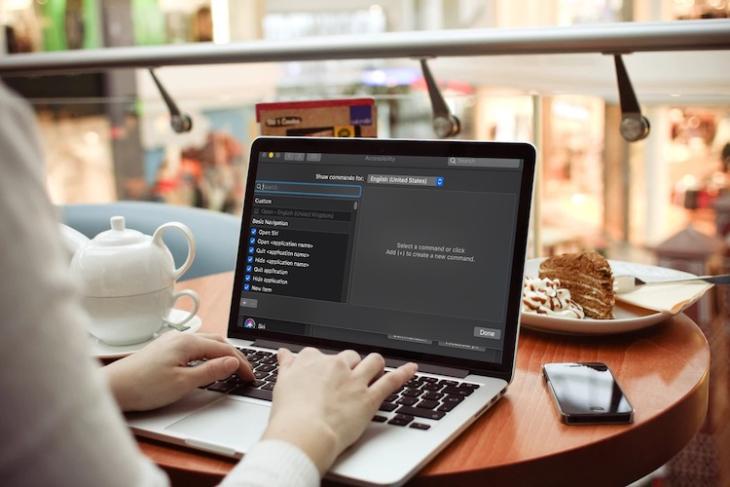
With macOS Catalina, Apple has introduced "Phonation Control" to provide a better way to control Mac with voice. And from what I can tell subsequently giving information technology a shot on my MacBook, it works pretty well. In fact, at times, I find it more than convenient to interact with the macOS device using voice commands instead of traditional input methods. Siri's oral communication-recognition engine coupled with the ability to recognize several apps, labels, and controls has played a vital role in making the dictation feature effective. Though macOS offers many readymade commands, you can choose to create custom Voice Control commands on your Mac for a personalized feel. And that's exactly what I'm going to bear witness y'all in this hands-on guide!
Create Custom Vocalization Commands & Vocabulary on Mac
Aside from fine-tuning custom commands, you can also create your own dictation vocabulary. If you want to have improved control, exercise not fail to craft your own set of vocabulary. That bated, there are a couple of things worth keeping in listen upfront:
- First and foremost, equally of now, Voice Command uses the Siri speech-recognition engine for The states English only. Other languages apply the voice communication-recognition engine that was earlier available with Enhanced Dictation feature.
- If you lot are using a proxy server on your Mac, you might need to disable it equally Voice Control might neglect to download on your device.
At present that everything looks clear, permit'due south get started with steps!
Enable Voice Control on macOS
You can quickly turn on voice control on your Mac merely by activating Siri and asking information technology to get the chore washed for you. Besides, you lot tin can also get it done from the System Preferences.
1. Click on Apple Bill of fare at the top correct -> System Preferences -> Accessibility.
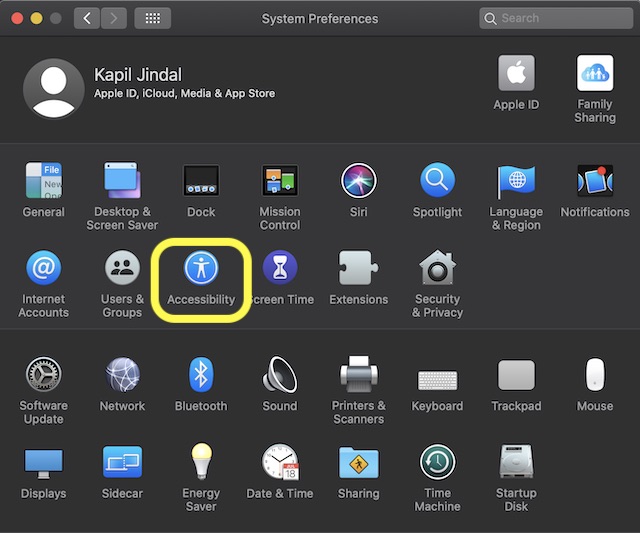
2. At present, click on Voice Control in the sidebar. After that, brand sure to check the box for "Enable Vocalization Command".
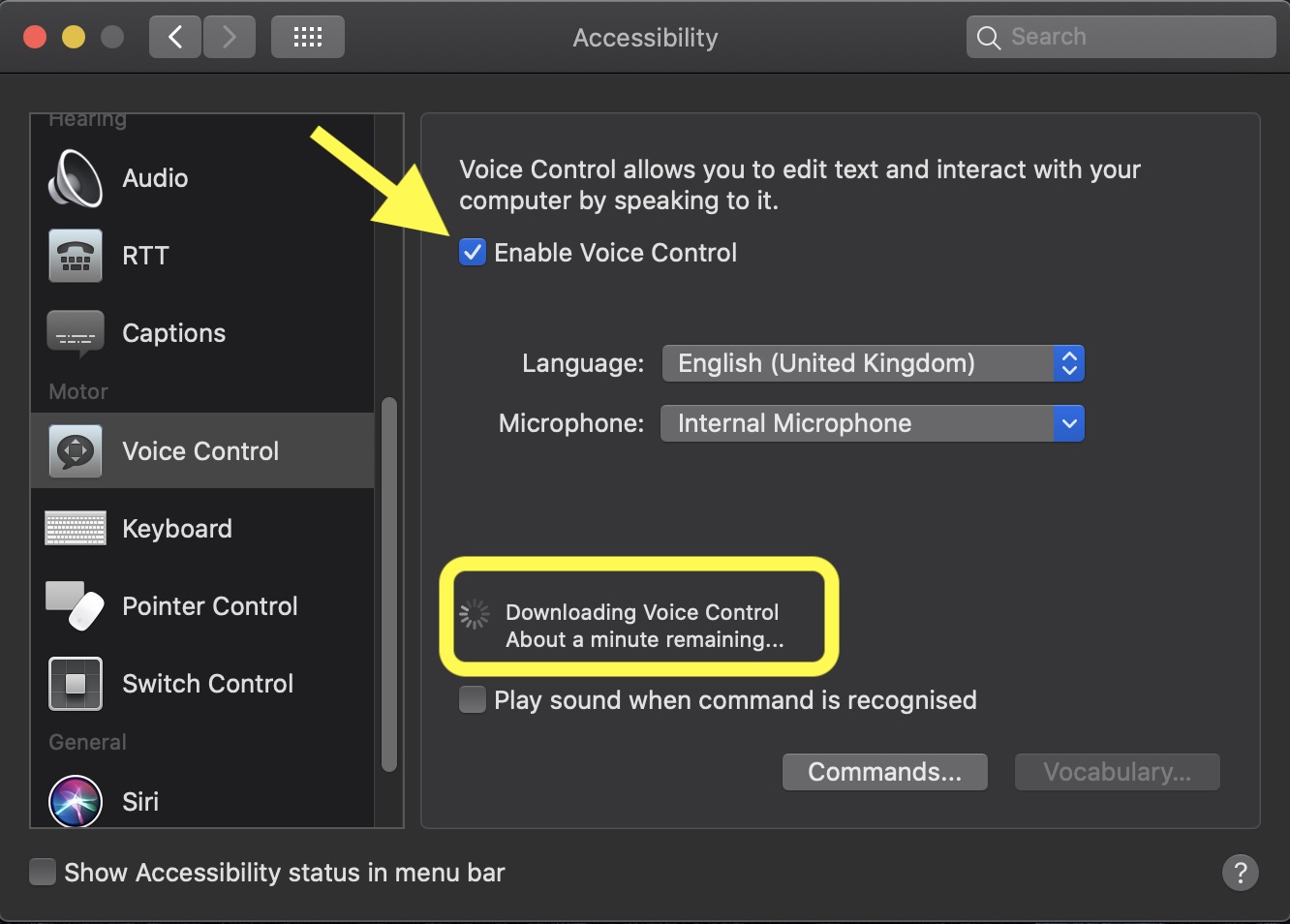
Adjacent up, you lot will need to expect for a minute or two to allow macOS download Voice Control on your Mac. When Voice Control is turned on, a microphone volition appear on the screen.
- Based on your needs, you can choose the preferred language for voice command. To add a language, click on the drop-down menu adjacent to Language and so click on Add Language. After that, select your preferred language. If you ever desire to remove it, select Customize and deselect the linguistic communication. Later that, click on OK.
- There is also an choice to change the microphone. To practise and so, click on the Microphone drop-down menu and then select the preferred choice.
- Play sound when a control is recognized: Make sure to cheque this box if you desire your Mac to play a sound to confirm that it has recognized a specific control.
If you desire to pause Phonation Control and end it from listening, simply say "Get to slumber" or just click on Sleep. To resume Vocalism Control, either say or click on "Wake upwards."
Customize Voice Control Commands on macOS
- Launch System Preferences -> Accessibility.

2. Ensure that Vocalism Control is selected in the sidebar. Now, click on Commands.

3. Next, you should run across several predefined voice control commands. Standard commands are grouped in several categories such as Overlays & Mouse, Bones Navigation, Text Editing, Text Deletion, Dictation, Text Selection, and Text Navigation.
Tick mark the ones that y'all desire to apply and uncheck the unnecessary ones. As well, select preferred ones to check out additional phrases for them. To add a new command, click on the "+".
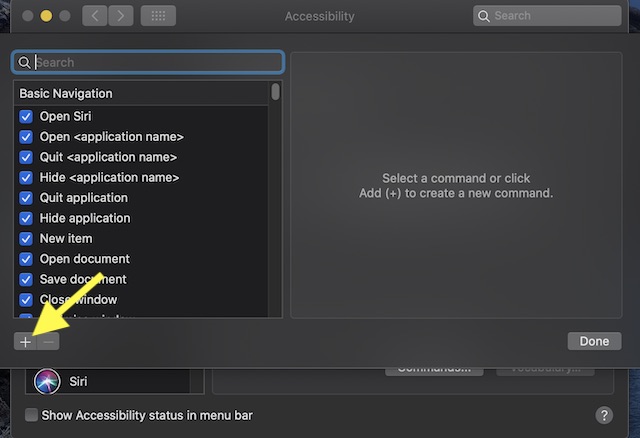
5. Adjacent upwardly, you have iii options:
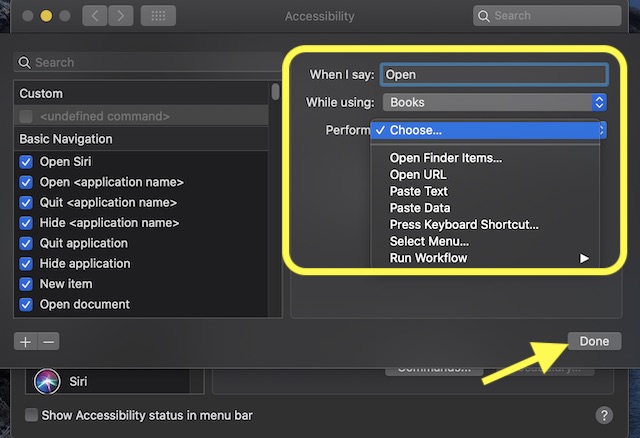
- When I say: Type in the phrase/discussion to invoke a specific action.
- While using: Choose a preferred app.
- Perform: Select the desired action.
In the end, make sure to click on Washed to ostend. All the custom commands show up right at the top of the Control list.
Going forwards yous tin use these Voice Control commands to navigate or interact with your Mac. If you ever make up one's mind to delete a control you had created earlier, return to the Voice Control preference and select the command in the Custom department. Later that, click on the Remove push
Customize Phonation Control Vocabulary
- Launch System Preferences -> Accessibility.

2. Make certain the Voice Control option is selected in the sidebar. And then, click on the Vocabulary option.
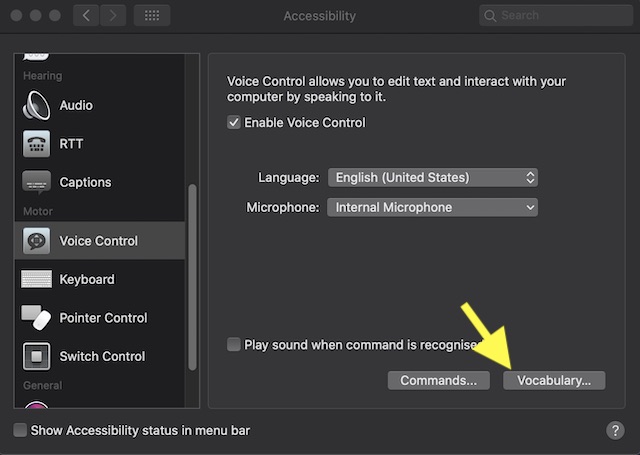
3. Next, click on the "+" push to add a phrase/word. After that, click on Save to cease.
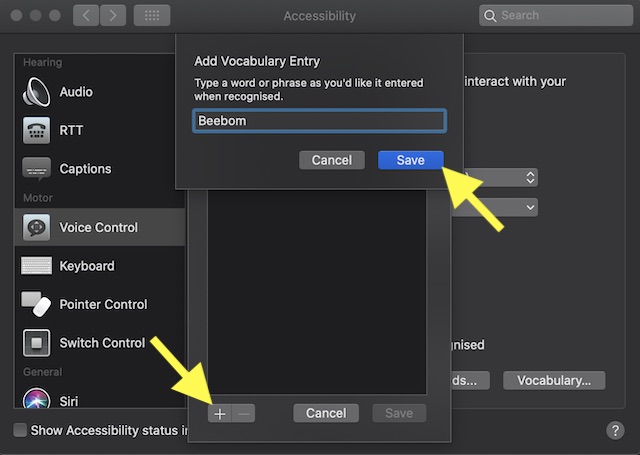
Fine-Melody Phonation Control Commands on Mac
And then, that's how you can create custom Voice Command commands on macOS to control your device more than comfortably using voice. These commands can come in handy in several situations when you desire to make the interaction with your computer a little convenient. Apart from this notable feature, macOS Catalina has come up with several new features like Screen Time, a full-fledged Apple tree Music app, and Canonical to permit Apple tree Spotter users unlock Mac with ease. Which is your favorite new feature and why? Do not forget to spill some beans about it in the comments down below.
Source: https://beebom.com/how-create-custom-voice-control-commands-macos-catalina/
Posted by: salgadohawas1970.blogspot.com


0 Response to "How to Create Custom Voice Control Commands in macOS"
Post a Comment